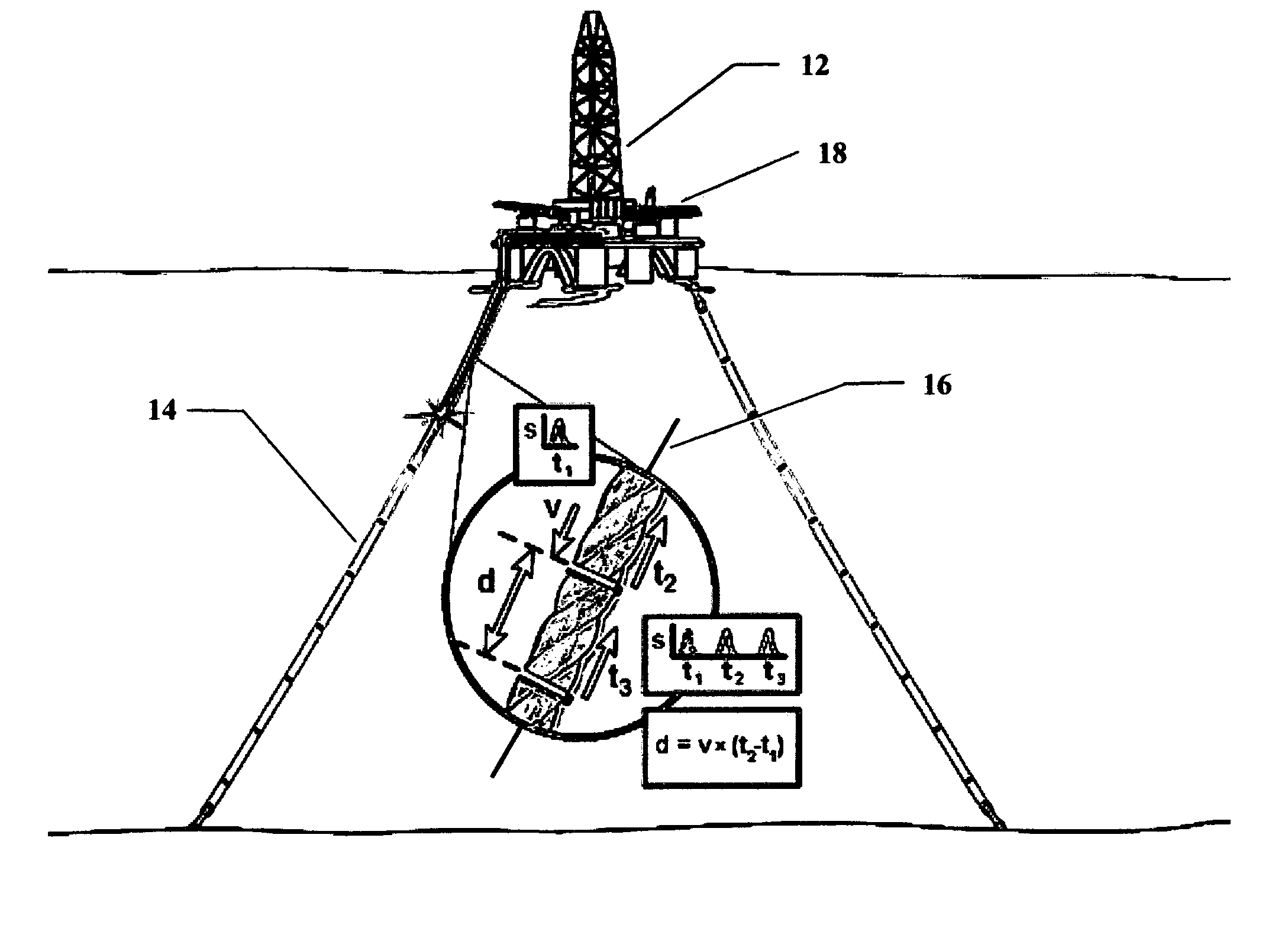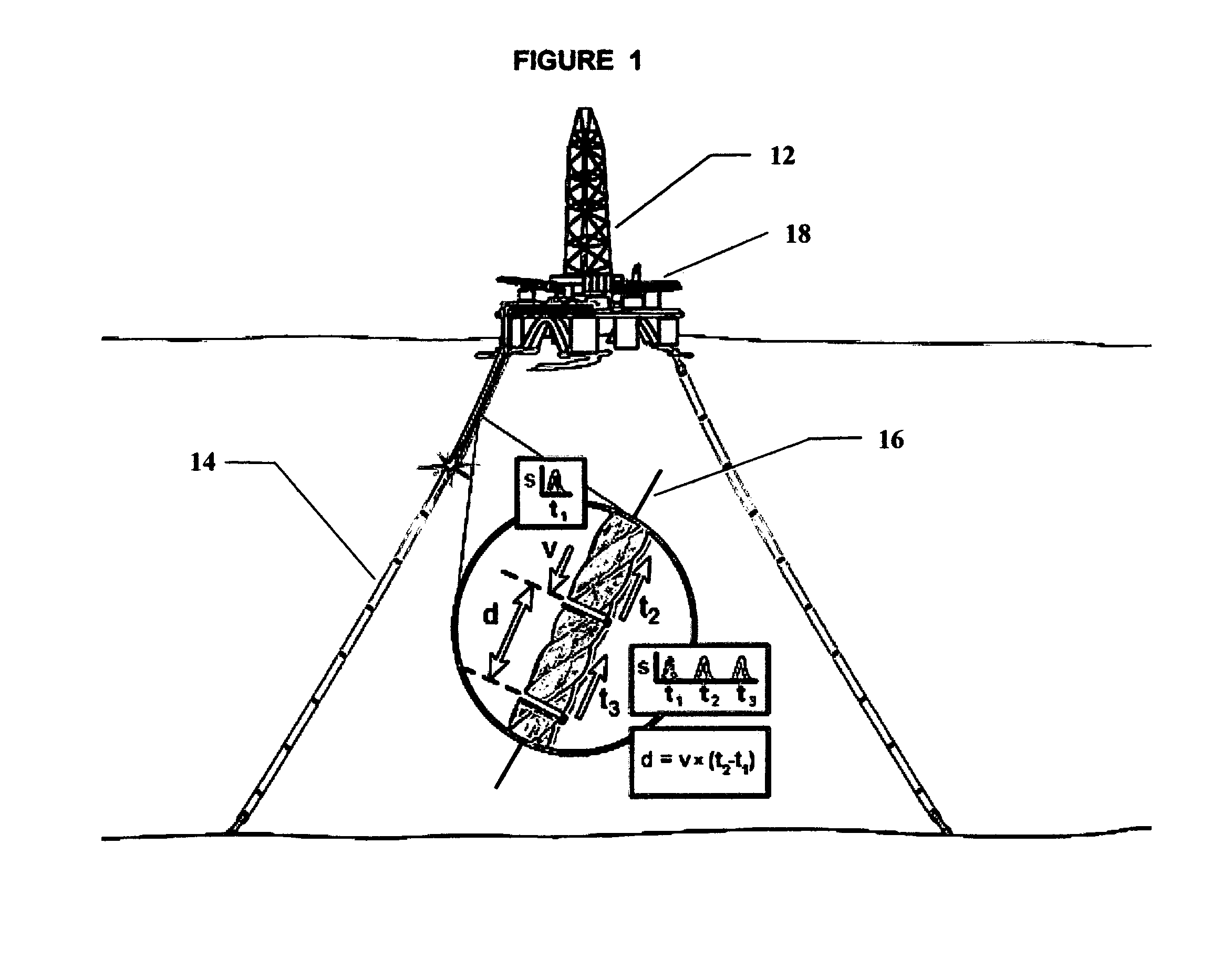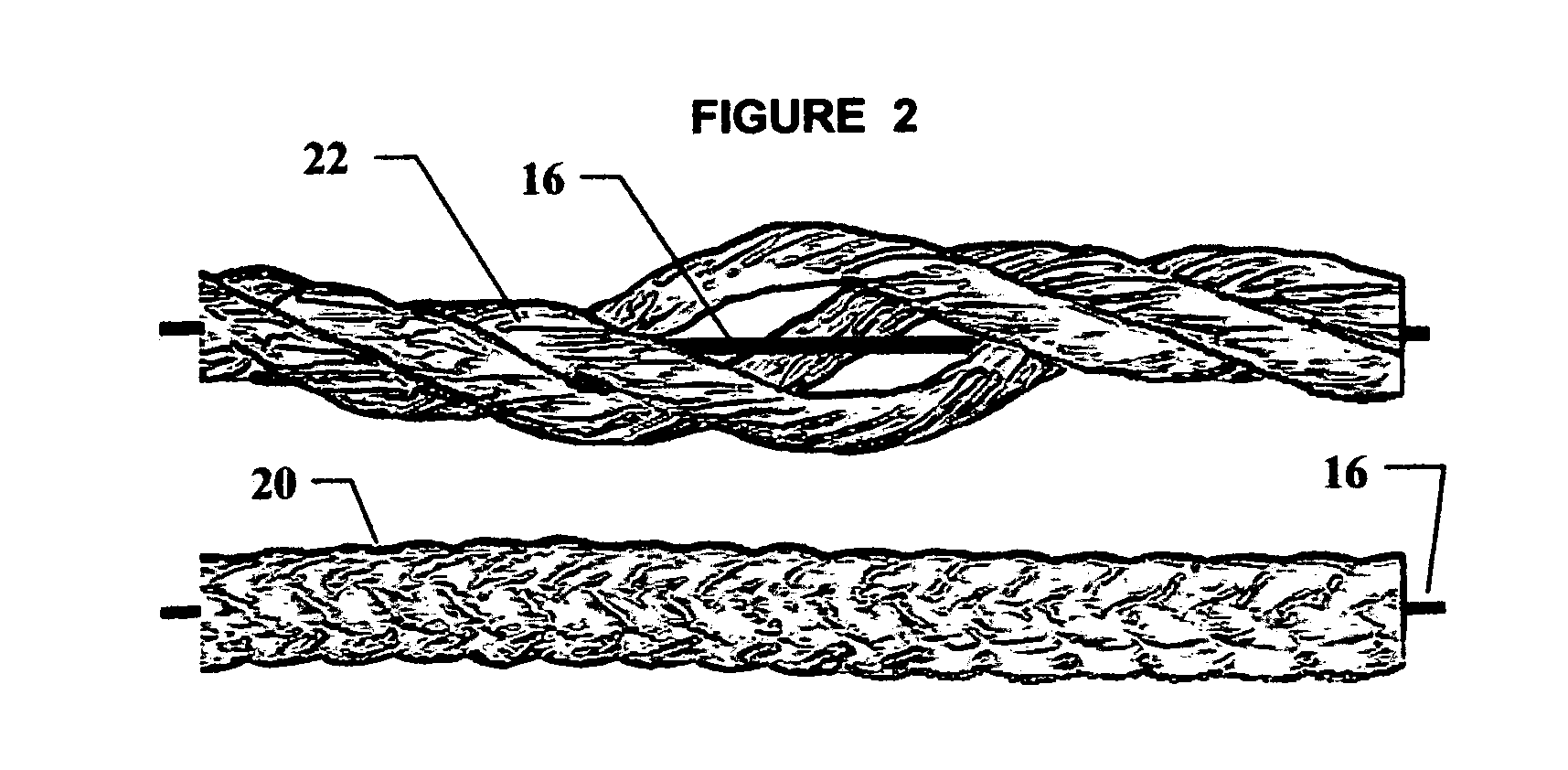Measurement of large strains in ropes using plastic optical fibers
a technology of optical fibers and strains, applied in the direction of distance measurement, instrumentation, force/torque/work measurement apparatus, etc., can solve the problems of reducing the strength of the rope, and causing damage to the rop
- Summary
- Abstract
- Description
- Claims
- Application Information
AI Technical Summary
Benefits of technology
Problems solved by technology
Method used
Image
Examples
Embodiment Construction
[0067]Generally speaking, the invention pertains to a method for making large in situ strain measurements, in particular, strain experienced in service by ropes such as offshore platform mooring ropes or docking ropes using a plastic optical fiber and a time-of-flight of light measurement technique involving instrumentation such as Optical Time Domain Reflectometry or Optical Frequency Domain Reflectometry. The application on an offshore platform mooring line features multiple sets of plastic optical fibers, multiple reflective surface within the plastic optical fiber to allow strain to be measured in discrete lengths of plastic optical fiber and thus the rope, and multiplexing to allow large numbers of measurements to be taken by a single Optical Time Domain Reflectometry or Optical Frequency Domain Reflectometry instrument.
[0068]Now referring to FIGS. 1 through 7, which teach the details of a method which can be exercised to achieve accurate reliable data for the measurement of la...
PUM
| Property | Measurement | Unit |
|---|---|---|
| radius | aaaaa | aaaaa |
| length | aaaaa | aaaaa |
| braid angle | aaaaa | aaaaa |
Abstract
Description
Claims
Application Information
 Login to View More
Login to View More - R&D
- Intellectual Property
- Life Sciences
- Materials
- Tech Scout
- Unparalleled Data Quality
- Higher Quality Content
- 60% Fewer Hallucinations
Browse by: Latest US Patents, China's latest patents, Technical Efficacy Thesaurus, Application Domain, Technology Topic, Popular Technical Reports.
© 2025 PatSnap. All rights reserved.Legal|Privacy policy|Modern Slavery Act Transparency Statement|Sitemap|About US| Contact US: help@patsnap.com



